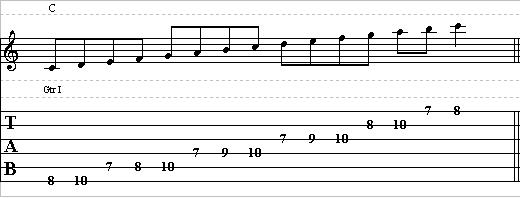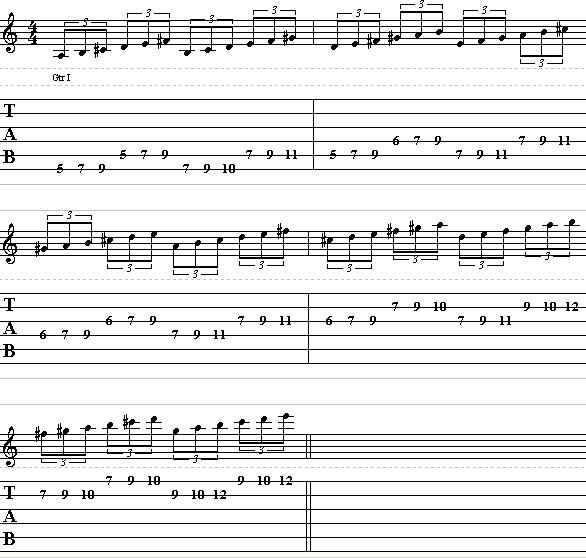Hey y’all, it’s Crawford Smith here with a lesson on jazz soloing. Today we’re going to take a look at the bebop scale. This scale, which was invented by Charlie Parker and other bebop pioneers but named by the author David Baker, is a variant on the mixolydian mode. It’s a great scale to have in your arsenal because you can use it to play over almost any chord within one key.
I’ll use the D bebop scale for this demonstration. The notes in the D bebop scale are D, E, F#, G, A, B, C, and C#. The only difference between the D bebop scale and normal D mixolydian is the introduction of the major 7th, C#. Somewhat counterintuitively, you wouldn’t use the D mixolydian to solo over chord progressions in the key of D; rather, the scale is used for progressions in G. You can use the scale over almost any chord in a G major progression, but it will sound best over the V or ii chord, which in G are D7 and Am7 respectively.
Traditionally, the bebop scale is used primarily for descending lines, but I like to use it in riffs going up and down. It’s a great scale for making your soloing sound more chromatic and “jazzy,” because it includes four tones one-half step apart leading up to the root.
Check out this cool JAZZ GUITAR LESSON
To practice soloing with this scale, you should find a backing track in an appropriate key and just have fun with improvising over it. Here’s a lick in the bebop scale that I find myself using a lot:
 Play this in a swung feel, and be pretty loose with the rhythm. To sound authentically jazzy, try to maintain a legato feel, without a lot of separation between the notes.
Happy Jamming!
I also want to recommend you to check out one of our best jazz courses in DVD:
REAL EASY JAZZ
Play this in a swung feel, and be pretty loose with the rhythm. To sound authentically jazzy, try to maintain a legato feel, without a lot of separation between the notes.
Happy Jamming!
I also want to recommend you to check out one of our best jazz courses in DVD:
REAL EASY JAZZ
 Play this in a swung feel, and be pretty loose with the rhythm. To sound authentically jazzy, try to maintain a legato feel, without a lot of separation between the notes.
Happy Jamming!
I also want to recommend you to check out one of our best jazz courses in DVD:
REAL EASY JAZZ
Play this in a swung feel, and be pretty loose with the rhythm. To sound authentically jazzy, try to maintain a legato feel, without a lot of separation between the notes.
Happy Jamming!
I also want to recommend you to check out one of our best jazz courses in DVD:
REAL EASY JAZZ 
